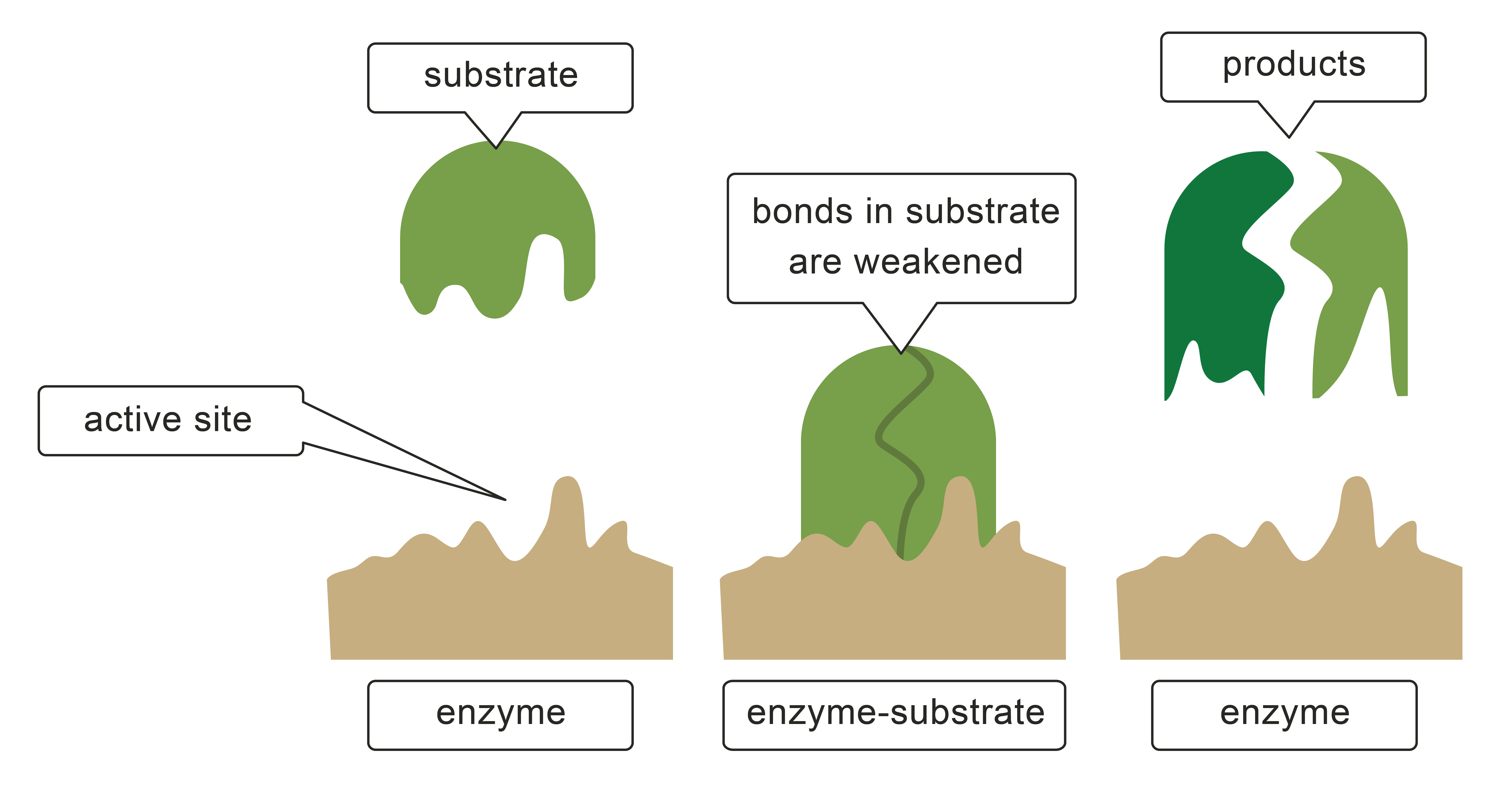Your body needs chemical reactions to be able to work effectively. They are happening all the time performing functions such as digestion, respiration (so you have energy), sending signals and creating new cell parts. Everything that your body does, it achieves through chemical reactions.
But these chemical reactions would not work if it weren’t for the enzymes in your body that speed up these reactions. We’re going to be looking at what enzymes are and how they work in this activity.
Enzymes are biological catalysts which means they speed up reactions in the body. Enzymes are made in such a way that reacting molecules can fit into them. If you look at the image below, you can see the substrate (the thing that needs to react) fits perfectly into the active site (the part of the enzyme that does the reactions). We call this the lock and key model because the enzyme fits in the substrate like a lock and key.
Enzymes can break down substrates, as in the image below (this typically happens in digestion and respiration) or they can put two substrates together (this will happen in plants when making glucose in photosynthesis). But it is important to remember that one enzyme has one function and that is it. It cannot do anything but its own job. There are about five different proteins needed just to do respiration.

Enzymes are 'denatured' (they no longer work) in conditions of extreme temperatures and pH. This means that you need enzymes to be specific to their environment – for example, the enzymes in your stomach are suited to work in a pH of about 1 because your stomach is acidic. If you put them into a different pH, they will become denatured (they won’t work).
They do this because their active site will change shape when moved to a different pH or temperature than they are used to. Because the active site has changed shape, the substrate will no longer fit and the enzyme won’t be able to do its job anymore. Just so you know, enzymes do not die - they were never alive in the first place, so they can’t die. They only denature.
Enzymes also aid food digestion by breaking down food molecules. Amylase is found in saliva and breaks down starch into sugars. Starch is a carbohydrate and every enzyme that breaks down carbohydrates is a carbohydrase. Proteases break down proteins into amino acids, and lipases break down lipids (fats) into fatty acids and glycerol.
Are you ready to try some questions on this topic now?
Want a bit more help with this before you begin? Why not watch this short video?








